Trevor Paglen is among the most innovative and successful artists working in the world today. In his ongoing investigation of the US Government’s massive and secret surveillance industry, he seamlessly moves between photography, film, video, sculpture and installation, and received an Oscar in 2015 for his contributions to the film “Citizenfour.” His major Fall Season exhibition at Metro Pictures, in New York, closed late last month.
Jonathan Blaustein: You’re in Berlin right now because of the museum exhibition with the massive autonomy cube? Is that what’s going on?
Trevor Paglen: I’m here in general, because I moved a bunch of my studio here in February or March.
JB: Gotcha.
TP: I’ve been working out of here a lot this year, back and forth between here and New York.
JB: There are a million things one would like to ask someone like you, who’s on the genuine cutting edge of how people make and think about art in the 21st Century.
TP: Thank you.
JB: You’re welcome. I would hope it’s not a surprise for you to hear that. You’ve been lauded in many circles.
You think about art in a way that is mind-expanding to others. What is the role of the artist in society today?
TP: I think the main thing it can contribute to society is that you don’t have to define what it is. Having said that, the kind of art that excites me most is art that helps us see the historical moment that we live in.
I guess that’s what I want out of it, for the most part. I mean that literally. I want things that teach me how to see.
That’s still pretty general.
JB: You use your practice as a way of understanding the world around you?
TP: Yeah.
JB: And other artists are free to make work as they choose.
TP: Absolutely. And I think that’s what ultimately is powerful about it. You and me and everybody and their sister can have a different definition of art, and that’s great.
JB: Right. It’s certainly what separates art from math. There’s not one answer.
You make your work for your own reasons, but the political and socially critical aims are so evident. For you, art offers enough opportunity to enact social change? Are you trying to change opinions and battle governmental structures, or are you just making your work?
TP: I don’t think art, in and of itself, can change anything at all. I think it can do a couple of things.
The first thing it can help you do is underline some things that may or may not be going on in the world, that you think are worth looking at.
The second is that it can give you permission to look at that. So through that kind of thing, you start to create the basis for a language with which to think about the way the world works. And again, literally see how the world works.
Art doesn’t make linear arguments. Art is not an op-ed. It doesn’t work that way. Even if I wanted to make an argument about- secrecy is bad- art is really not a great vehicle with which to do that, because you can’t make a thesis statement. You can’t defend it with evidence. It’s much more impressionistic, and I think that the moment we get too confident in the meaning of art, it will often run away from you in the opposite direction.
JB: So why art? Why did you end up with this non-literal way of expressing yourself?
TP: I have always been an artist. That’s the simple answer. I’ve always made stuff, since I was a kid. And I’ve always thought visually. That’s the baseline I’m coming from.
But I think the other part of it goes back to what we were talking about before, where the discipline of art is not narrowly defined. There’s a lot of exploration, and both methodological and formal promiscuity, that you can take part in as an artist.
JB: (laughing.) That’s awesome. Because that’s the way people normally drop promiscuity into casual conversation. I love it.
TP: (laughing.) Right.
JB: That was awesome. I’ve done a lot of these interviews, and terminology always seems to come up. We’re living in this perma-freelance culture, which I call the 21st Century Hustle. It’s a mashup environment.
TP: Sure.
JB: It’s a networked environment. We know this. And yet, a lot of times, people still get stuck on nomenclature. On distinction.
TP: Yes.
JB: Maybe in a way that’s a bit 20th Century. You’ve been quoted as saying you’re an artist, not an activist. You have colleagues who would fall in the latter category, and then of course there’s always the hybrid.
In your mind, if you’re going to say “I’m not an activist,” how do you make the distinction? And does it even matter anymore?
TP: (pause) I guess, for me there’s nothing metaphysical at stake. The longer I’ve been around this stuff, the more confusing that question gets to me, to be honest.
I’m friends with people who work at the ACLU, for example, and work alongside them quite a lot. We can be looking at similar kinds of things. What they do is pretty different from what I do, and at the same time there is a lot of overlap.
But I think there would be a lot of overlap between them and journalists in some cases. And then, obviously between them and traditional lawyers. And in other cases from policy-makers.
I guess I don’t see the world, and don’t see the ways in which people do things in the world, as falling in to very rigid categories.
There are really no lines, if you like. I don’t feel like there are any disciplinary boundaries I need to respect.
JB: That’s what I’m getting at. It almost seems outmoded, this idea of drawing lines around words. I am this, I am not that.
TP: Generally, when you hear people doing that, it’s a pretty conservative position. If you’re sitting around having a conversation about what’s art, and what’s not art, you’re probably defending a very conservative position.
JB: One of the elements that finds its way into your work is spying on the spies. Actually enacting the behaviors that you’re critiquing in order both to draw attention to them, and to create an innovative process. While investigating the things you want to investigate.
Through your work, you found yourself tracking down a CIA black site in Kabul, Afghanistan in 2006. What was it like to be there then?
TP: First of all, I want to jump in on the way you set up that question. I might take a little bit of an issue with it. I think a lot of people look at what I do and say, “He uses the same techniques that the government uses, to look at the government.” But I actually think that the kind of practice, or viewing the things that I look at, have basically nothing to do with the way that state surveillance works.
In the sense that there is a very fundamental difference between a citizen of the state looking at how the operations of a purportedly democratic state are working? Versus a state working in secret to surveil its citizens, or gather intelligence about them.
I think they’re fundamentally different things. Although there are some rough outlines that on the surface appear similar.
JB: Of course. I’ll stipulate that you can’t possibly ape the multi-trillion dollar machine that you’re critiquing…
TP: And I’m not doing it in secret.
JB: Right.
TP: But anyway…I just want to mess that up a little bit.
JB: Please. Feel free. We’re talking about your work. But when you spoke in Santa Fe, with Rebecca Solnit, I remember you talking about keeping tabs on certain mailboxes, and tracking down people who were in the CIA. Following them home.
TP: Oh sure.
JB: I don’t have trouble using the term spying. It’s clearly not the same thing as what the NSA is doing. It’s a structural metaphor. I think a lot of the best work uses relevant elements within its process as a way of commenting on process.
Having said that, I will not be the person to tell you how you’re working, or what you’re doing.
TP: (laughing)
JB: We’ll let somebody else be that guy.
TP: In terms of being in Afghanistan in 2006, I was there with an investigative journalist who’s a long-time friend and sometimes collaborator on different projects. There were about a dozen people around the world who were trying to understand what the global footprint of the CIA’s extraordinary rendition program was.
In other words, the CIA had a program of kidnapping people around the world, and holding them in secret prisons and torturing them, basically.
JB: Right.
TP: And one of the things we were trying to figure out was where these prisons were. It wasn’t just us, we were talking with people at Human Rights Watch, for example…but we strongly suspected there was one outside of Kabul. And that’s been subsequently confirmed, that the place we’d found was indeed one.
We spent a couple of weeks in Afghanistan in 2006, interviewing everyone from former prisoners to local journalists to human rights workers. Aid workers. Basically as many people as we could find who’d come across evidence of this.
At that time in Afghanistan, the War in Iraq was going full on.
JB: Yeah.
TP: People had basically forgotten there was this other war going on in Afghanistan. I think that’s something the CIA was leveraging, quite a lot. They had this place they controlled relatively well, and the world’s eyes were simply not on it at that moment. People were looking at Iraq.
In Afghanistan at that time, and I’m sure it’s true now, it’s crawling with mercenaries and spies. There’s a whole class of people in the world who show up at wars, and get involved somehow.
JB: I was hoping to hear about the on-the-ground reality. The adrenaline pumping. Did you feel like you were any more at risk than anyone else in that city at the time? Did you feel like you were in any more danger than anyone else would be in a dangerous city? Were there people aware of what you were doing?
TP: There were definitely people aware of what we were doing. On the other hand, I didn’t feel in much more danger than other places. At that time, when we left, I was living in Oakland, California. When we were researching and talking about going to Kabul, my first impression was “No way. It’s a war zone. I don’t want to go anywhere near it.”
Then I tried to be a little more rational about it, and I looked up what are the kidnapping and murder statistics in Kabul? It turned out that Oakland was 10 times more dangerous, or something like that.
JB: Yeah, man. I had a former colleague whose journalistic mentor was shot in the face in broad daylight, because of a scandal about the…
TP: Chauncey Bailey. Is that what you mean?
JB: Yeah.
TP: Wow. The black muslims.
JB: Yeah, the guys who run the bakery, but are also the Oakland Mafia?
TP: Exactly.
JB: Anyway, moving on from Oaktown. Let’s talk about the idea that in the 21st Century, people now know that they’re under almost perfect digital surveillance, thanks to the work by you and your colleagues.
These stories pop up in the global media cycles for a day, or a week, and then there’s always the next way of commodifying the news. Do you think now, a couple of years after Edward Snowden’s revelations that led to “Citizenfour,” that people are too apathetic and tuned out?
Do you think there is a complacency, for the average American, in the face of this information?
TP: I’d break that up a little bit.
JB: Sure.
TP: In terms of popular culture and everyday life, we have no physical experience of mass surveillance. It seems kind of abstract to the normal person.
JB: Right.
TP: In addition to that, it is abstract because in order to understand it, and its implications, you need a pretty developed technical knowledge about how infrastructures work. How data works. How processing and protocols work. That sort of thing.
On one hand, I think that it’s difficult for people to become outraged about something that you don’t have a visceral feeling of in everyday life.
At the same time, for people who work with these infrastructures, and are a part of these industries, this has been a huge and ongoing thing. The Snowden stuff is still a HUGE deal in the world of information technology and network security. Everybody talks about it non-stop.
JB: I don’t doubt it.
TP: The Snowden documents showed the degree to which global telecommunications infrastructures had been totally, not only compromised, but weaponized. For everybody outside of the NSA, who works in that industry, this was a real punch in the gut. When you talk to people on the technical side, people are doing a lot of work to re-think what these infrastructures might look like in light of what the NSA is capable of doing.
Not just the NSA, but state actors in general, on one hand, and there’s been less concern on the corporate side, which I think is actually just as big a deal, if not a bigger deal than the state side. But I definitely think that a lot of these questions are on the cultural agenda in a way that they really weren’t at all, pre-Snowden.
JB: Unquestionably. So part one was, your average citizen may well be complacent, but that’s understandable, given that it’s an abstract concept, the degree to which their digital security has been compromised. It’s hard to get pitchfork angry about it.
But for the experts, powers like this are very hard to undo. It’s almost like the nuclear revolution. Once those bombs existed, they existed. So at the highest level, there’s a re-organization of the landscape, in a world in which these powers are out there, and are not likely to be constrained.
TP: I mean something very simple, which is that everybody from Google on one hand, to anarchist computer clubs in Berlin, on the other hand, are trying to figure out how to build much more secure systems. Obviously, they have different end games with them. Google wants to create a system that they can surveil, but that other people can’t break into.
Wheres someone like the Tor project is trying to build infrastructures that are, by design, very very difficult to conduct mass surveillance on. Both of those actors, at different ends of the spectrum, are nonetheless united by the revelations about the degree to which telecommunications infrastructures have been compromised by state actors such as the NSA.
JB: Right. The nefarious “they.” I had to get the local video store to hold a copy of “Citizenfour” for me, and I watched it the other day in anticipation of this interview.
I had my little notebook next to me, and it seemed like every tenth word in this film was “they.” The simple pronoun “they” came to stand in, obviously, for the NSA, but also the powers that be. The other guys. The bad guys.
Of course, it’s not that binary, good guys/bad buys, but how could I not ask. To you and your colleagues, who are “they?”
TP: I don’t generally use that language, “us” and “them.” It’s pretty blunt.
JB: It came up at least 50 times in “Citizenfour.” It was like a drinking game.
TP: (laughing.) I think you could create the “Citizenfour” drinking game around that.
JB: I think we just did.
TP: It’s generally a binary term that I don’t use, but I think in the context of “Citizenfour,” he probably meant “they,” the NSA. Right?
JB: Right.
TP: You can say that the NSA is not an internally consistent or unified actor in the world, but at the same time, it’s pretty close to being one. It is an organization with a tremendous footprint on the world, that does have some fairly specific goals that it’s trying to achieve. And it’s an organization that operates, in large part, in absolute secrecy, and with very little oversight.
JB: For me, and probably for many viewers, it was extremely disturbing to see the scenes where those guys openly lied to Congress. That’s evidence right there. “They,” or elements of the National Security Agency, do not believe they are beholden to the legislative branch of the US Government.
TP: The Directors. The people at the highest levels.
JB: People need to see the film.
TP: And they aren’t, by the way.
JB: Well, there’s another question I’d like to circle back to, about grass-roots versus grass-tops activism, so maybe we can lead into that.
I watched the film trying to find your imprint. There were several beautiful, aestheticized establishment shots, one of the big oversized satellite dishes. External moments. Brief interludes. I guessed those were yours. Is that right?
TP: Yeah. In general, a lot of the landscapes, I shot for that film.
JB: Did you do the gorgeous shots of Rio de Janeiro?
TP: No, I did not. Laura shot that, and she also shot the Utah data center stuff.
JB: OK.
TP: We both shot it. There were other things in Germany that I shot, and in the UK. I shot about 90 hours of footage for the film, in about 12 or 15 different places in the world.
It wasn’t just shooting for “Citizenfour,” it was also doing research. Looking at infrastructures, and trying to understand how do mass surveillance infrastructures work, and how does that lead us to places in the world that we should pay attention to, and make images of, even if those images don’t have any obvious evidence of mass surveillance in them.
That was the process. The deal that I’d made with Laura was that whatever they didn’t use towards “Citizenfour,” I could use for my own work. There’s a video installation that was just shown in New York, (at Metro Pictures,) and is about to go up in Vienna that’s made out of tons of landscapes that were shot for “Citizenfour.”
JB: Fantastic. Was it in the investigatory research for the film that you started discovering the locations of these undersea cables?
TP: Yeah. Exactly. When I started researching the film, that’s one of the things I started thinking about a lot. This is something that Snowden, and also Bill Binney, who is another NSA whistleblower, kept underlining: the importance of cable stations and cable landing sites.
I had never even heard of that. I had no idea what it even was. So that’s one of the things that we ended up looking at.
JB: And now you’re going to be leading a scuba tour to show people these cables?
TP: (laughing.) Yes. I learned how to scuba dive earlier, in January or February. I’d been traveling around, trying to find different cables on the bottom of the ocean, around these different landing sites. Then photographing them underwater.
I know where a bunch of them are around Miami, so I was going to the art fair, (Art Basel Miami,) and I thought, “Well, let’s just put together a little expedition.”
JB: Let’s pivot a second to what may be a more difficult question. We agree that a lot of people ought to see “Citizenfour.” But as I was watching, and breaking it down, it felt like as important as this information is, and given that your average citizen is not terribly connected to that import, the film did feel to me somewhat inaccessible.
Maybe it was even constructed as such. Very little camera movement. The use of music is muted. There are long sections of lengthy, super-high level discourse.
And with your work, the people in the Art World, who pay attention to art a the highest level, the people who support it are a part of the 1%, not the 99%. I know you’ve worked with some of the Occupy folks, and I’m just sitting here as a critic, but it seems like we’re up against the grass-roots versus grass-tops conversation.
Does one try to influence mass culture directly, or does one try to influence the influencers? It felt to me like “Citizenfour,” and some of your work, falls into the latter category. How would you respond to that?
TP: I’m interested in being as ecumenical as possible in the work that I do. I try to make it as accessible as I possibly can, and try not to be an artist who is really pretentious, and says, “I’m not going to talk about what it is.” Because I think what it is is interesting, and important.
But I think we all speak to different audiences. As an artist, there is an art infrastructure that has specific kind of venues that people go and experience it within. You always have a self-selected audience, whether you’re writing for VICE magazine, or doing an independent film, or making art in museums. I think that’s OK.
Not everybody has to be all things to all people, all the time. For me, anyway, I just try to make the work as accessible as I possibly can, and to create as many different avenues into it as I possibly can. That’s really all I think you can expect of one person. That’s my approach towards it.
JB: You’re an artist, you make art, and as such, you engage in the world that supports it. OK.
It’s mind-boggling how many ways you’ve been making art in the last 6 or 7 years. I doubt you have much time for sleep. “The Last Pictures” is a project in which you launched a highly specialized piece of information-storage-technology into space, on a satellite that was at least intended to speak to Deep Time. To a future that nobody can possibly imagine. Is that about right?
TP: It was a project that was trying to underline the existence of Deep Time, and the fact that humans are making interventions into Deep Time. We wanted to inhabit that contradiction.
The provocation of the project was to say, “Humans are capable of altering the planet on cosmological time scales, and we can’t even imagine what a cosmological time scale is.”
Discuss.
JB: (laughing.)
TP: (laughing.)
JB: Awesome. One person could take his or her entire life to edit down a selection of photographs to represent humans.
TP: It’s an impossible project.
JB: Right. But you did it as one of many things. So what was your criteria? What goes through your head when you have a responsibility that nobody really could or should have, but you have it. How do you react? What do you do?
TP: For that project, we narrowed down the question a little bit. It wasn’t “How do we represent humans to some beings in the distant future,” the question we had was a little bit more specific. It was, “What are all the ways in which human progress has backfired?”
JB: OK.
TP: What are the ways in which we have terraformed the Earth’s surface in our own image, which has paradoxically created the conditions for our own potential extinction? That was a little bit of a narrower question.
How do you represent this moment in which human activities have affected every grain of sand on every beach?
And the way I approached it was to create a research group at Creative Time, who commissioned the project. I had a group of mostly graduate students, but also other artists, and we spent the better part of a year having weekly seminars. Bringing in images, and talking about the project. Trying to think through these questions.
We also brought in different guest speakers who were in town. It really was a kind of seminar that we ran. In addition to that, I interviewed between 40 and 50 different people around the world who are involved in fields where these kinds of contradictions between progress and self-destruction were becoming very evident. From people studying bio-technology to people who were pure mathematicians, in some cases.
A huge range of sciences and social sciences and arts. By collecting these conversations, certain types of images would distill from them.
I didn’t actually pick that many of the images. I brought them all together, but it was a pretty collective effort.
JB: I assumed you had collaborators. But it’s very evident from our conversation that you don’t get to make the kind of work you’re making right now, you don’t get to have the kind of cultural imprint you have, without reams and reams of collaborators.
TP: Oh yeah.
JB: You’re building teams everywhere.
TP: For everything. Yes.
JB: For everything.
TP: Yeah, I have different teams for everything.
JB: But you have to.
TP: You have to.
JB: It’s fascinating.
TP: I don’t go into a studio at the beginning of the day, and then emerge at the end of the day with anything. (laughing.) Mostly, I email people and talk to people. On any given day, that’s mostly what I’m doing.
JB: Right. And you’re learning. You get to work with global experts in their own individual fields. That’s what an artist means in 2015.
We talked about the term. You get to do these things under the mantle of “artist,” and co-ordinate with other experts.
Speaking of which, you did a piece in the Fukushima exclusionary zone that I’d like to talk about. We have a program here at UNM-Taos, where I teach, and we bring in High School students from the rural communities around Northern New Mexico, and they get two free college classes each Friday.
One of the communities outside Taos is called Questa, and Chevron had a Molybdenum mine there that they recently closed, and it’s become a Superfund site. This town has to deal with the aftermath of losing all the jobs, and having their mountains ruined.
So one of my Questa students, Anna Marie Sanchez, wanted to ask a question about the Trinity Cube that you made in Fukushima.
TP: Sure.
JB: How was the radiation cube made? And if people aren’t allowed to view it for between 3 and 30,000 years, because it’s in the exclusion zone, how did you handle the radiation to build it?
TP: The exclusion zone is radioactive, but it’s not radioactive in the way that a nuclear submarine is radioactive, if it melts down.
JB: OK.
TP: The radiation in the exclusion zone, in particular in the place where we were working, is basically the same level of radiation you would have if you took an inter-continental flight to Europe. If you got above the atmosphere and were bombarded with cosmic rays.
You can go into the zone for any number of hours at a time. I think it’s up to 6 hours.
JB: Suited up?
TP: Yeah. Sure. Absolutely. And it’s not considered harmful, basically. The idea is that you can go in and out of there, especially if you’re a resident, but you can’t live there.
And in terms of handling the material, it’s radioactive, but a very low level of radioactivity. Weirdly enough, it will become more radioactive the longer it stays there. That’s a part of the piece.
JB: Because it absorbs radioactivity from its surroundings? The outside is glass, and the inside is Trinitite, which comes from here. From New Mexico.
TP: Yeah.
JB: From the Trinity site. Did you have to come here to harvest it? Can you buy Trinitite on Ebay? How does one come by the materials themselves?
TP: The first rule of Trinitite is that you don’t talk about where you got the Trinitite. (laughing.)
JB: Is that a David Fincher reference? I think that was.
TP: Yeah.
JB: Right on. I love it.
TP: Trinitite has been illegal to collect since 1974, but Trinitite collected before 1974 is out there. You can get it from different collectors.
JB: I was just curious. I didn’t know it was illegal.
So this is predominantly a photography blog, but we like to talk about art when we can. We now have a picture of you, the modern, hyper-successful artist who’s working in photography, research, video, sculpture, film, space. All sorts of things.
You’ve lived on the West Coast, the East Coast, now in Germany. But at some point, you were in Chicago. I was just there for the first time, pretty much, and had almost no free time, as I was at the Filter Photo Festival.
I carved out an hour, and visited the Charles Ray show that’s currently up at the Art Institute of Chicago. Did you have a chance to see that?
TP: No. I haven’t seen it. I haven’t been to Chicago for a long time. I went to graduate school there, but I have not seen that show.
JB: OK. I was asking because he’s making these sculptures that have these very obvious classical references, and he’s working with teams, but the sculptures are made out of machine-tooled stainless steel, and will last forever. They’re referencing the past, but speaking to the future.
It made me think, in particular of “The Last Pictures,” but of the way you’re working. You’re making an imprint that will outlast us, and then trying to figure out what to say with that imprint.
I was wondering if you were familiar with the work, or had thought about it all, and it sounds like the answer is “No.”
That’s a quick answer.
TP: The quick answer is “No,” the longer answer is I think when you’re making art, you’re always in a dialogue with your ancestors, and your descendants. The way that I think about it, anyway, is that you’re part of a conversation that is on a horizontal axis, in the sense that you’re talking to the other humans now.
But it’s also on a vertical axis, in the sense that you’re talking to the artists that were alive before you, and you’re talking to the artists who will be alive in the future as well.
JB: Can I hit you with one more question?
TP: Yeah, one more, and then I’ve got to go. I’ve got a conference with a space company.
JB: Exactly. How perfect.
I’m sure you’re familiar with Neal Stephenson’s “Snow Crash,” and how so much of it has come true. Lately, I’ve been trying to put some of my interview subjects on the future prognostication seat.
I read where you were discussing the degree to which drones would become ubiquitous in the future, and people know about Amazon, and their plans for a drone delivery fleet. We didn’t even get to talk about your photographs of drones.
How will people’s lives be different when drones are everywhere?
TP: I think about drones as one very small part of a much larger landscape of automation in general. Automation of labor, on one hand, and automation of analytical work, on the other.
In terms of automation of labor, drones would be a part of a landscape that includes self-driving cars, which will have a huge, huge economic impact on the country. Especially if you look at something like the trucking industry.
Being a truck driver is one of the few jobs that a modestly educated person can have right now, and make a living at all. Particularly, if you look at different economies of the South, the income generated by truck driving is just massive.
So when those jobs start to go away, it’s going to create a huge amount of economic distress, and even further exacerbate the tendencies that we’ve seen in terms of a bifurcation between the 1% and everybody else.
JB: Sure.
TP: In terms of the automation of analysis, we’re already there, it’s just not evenly distributed yet. You’re going to see a world in which much of your activities will be quantified.
It’s very easy to imagine a world in which, for example, the insurance rates on your automobile will fluctuate every month, based on what kind of material you’re posting on social media. What kinds of books you might be buying. What kind of activities you might be engaged with.
Your health insurance rates might fluctuate based on how much time you spend at the gym, and what kind of data your Fitbit sends off to Microsoft, or whomever. These kinds of things, which already exist, will be much more pervasive.
It will add up to a society that, in general, is much less free.
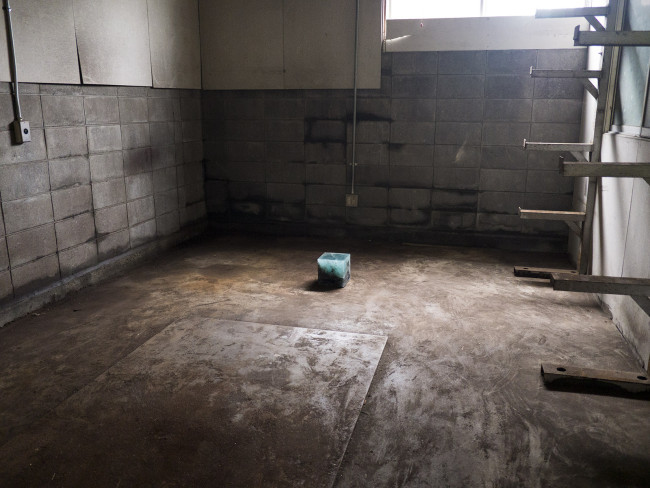
Irradiated Glass from Fukushima Exclusion Zone, Trinitite
20x20x20cm
2015
Trevor Paglen; Metro Pictures, New York; Altman Siegel, San Francisco
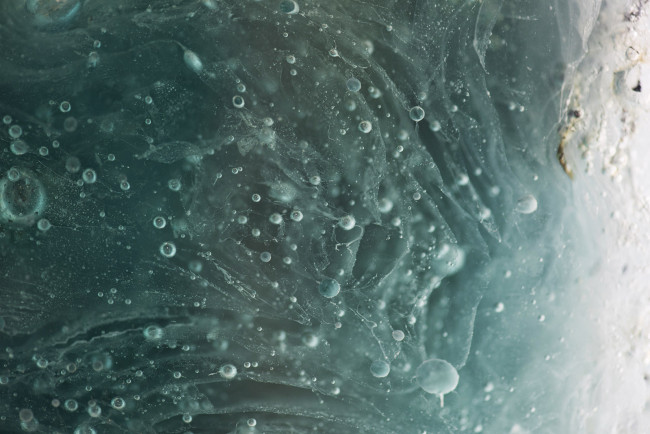
Irradiated Glass from Fukushima Exclusion Zone, Trinitite
20x20x20cm
2015
Trevor Paglen; Metro Pictures, New York; Altman Siegel, San Francisco
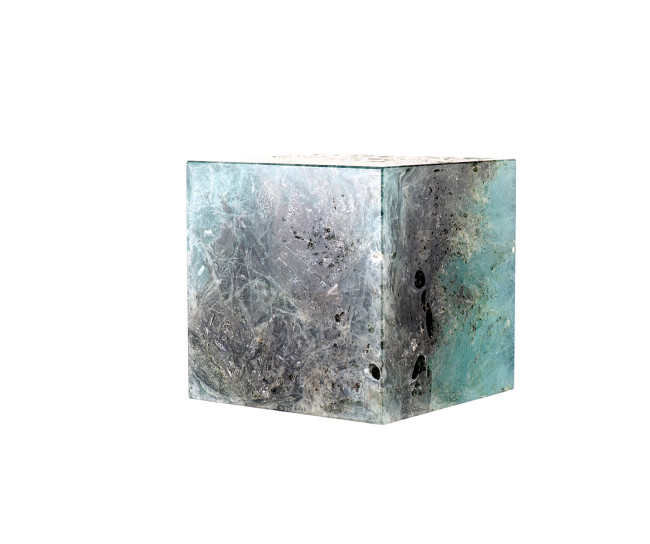
Irradiated Glass from Fukushima Exclusion Zone, Trinitite
20x20x20cm
2015
Trevor Paglen; Metro Pictures, New York; Altman Siegel, San Francisco
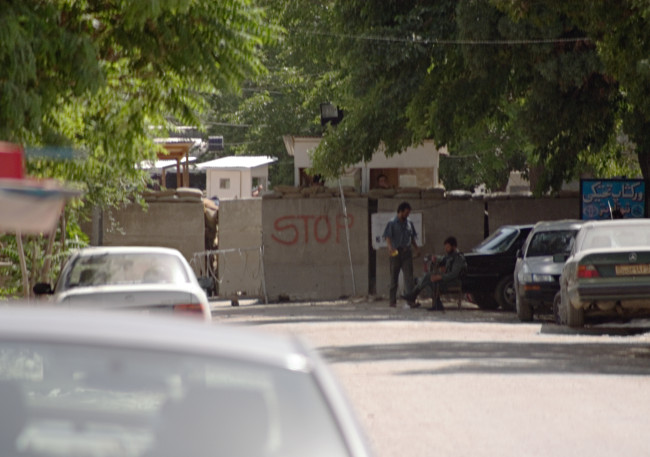
Black Site, Kabul, Afghanistan
C-print
2006
Trevor Paglen; Metro Pictures, New York; Altman Siegel, San Francisco

They Watch the Moon, 2010
C-print
Trevor Paglen; Metro Pictures, New York; Altman Siegel, San Francisco

Untitled (Reaper Drone), 2010
C-print
Trevor Paglen; Metro Pictures, New York; Altman Siegel, San Francisco
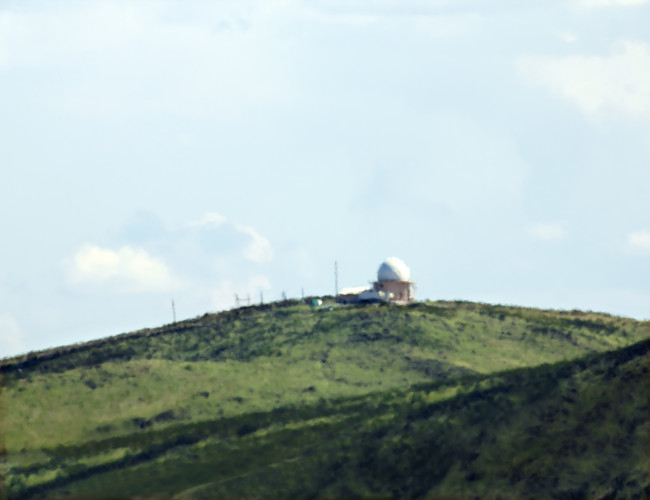
National Reconnaissance Office Ground Station (ADF-SW)
Jornada del Muerto, New Mexico
Distance ~16 Miles, 2012
C-print
Trevor Paglen; Metro Pictures, New York; Altman Siegel, San Francisco
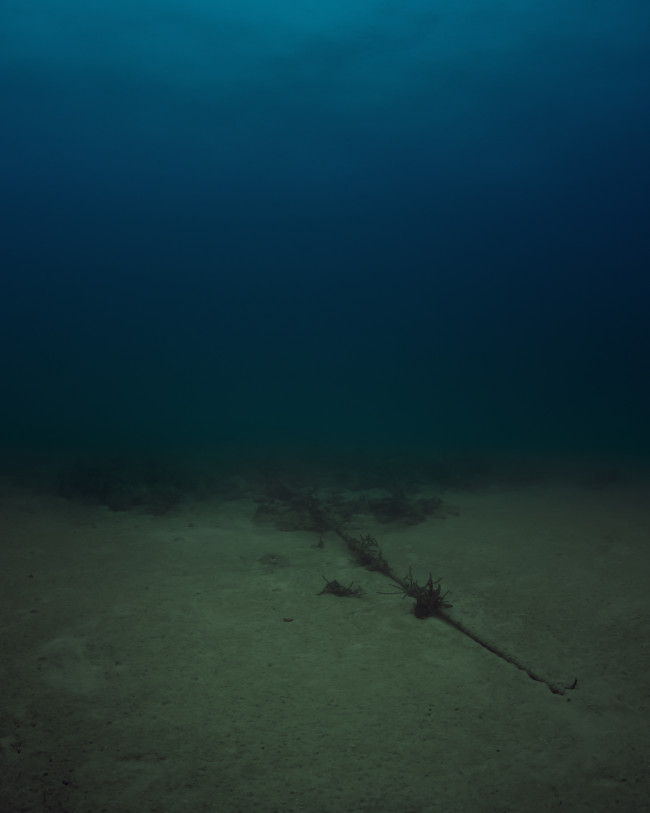
Bahamas Internet Cable System (BICS- 1)
NSA/GCHQ-Tapped Undersea Cable
Atlantic Ocean
2015
C-print
Trevor Paglen; Metro Pictures, New York; Altman Siegel, San Francisco
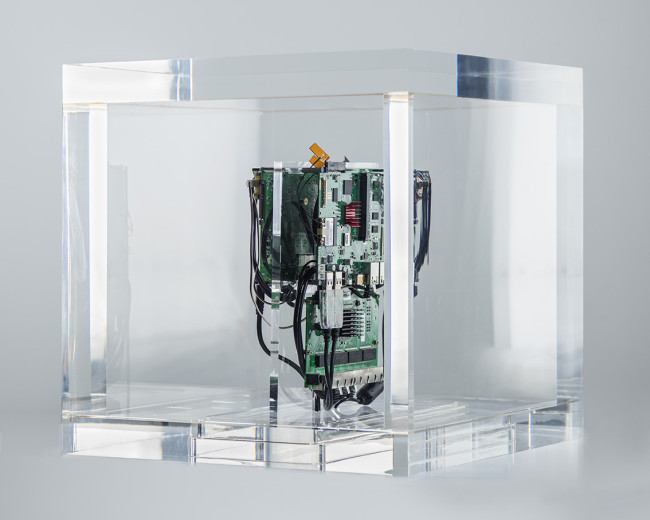
Mixed media
350mm x 350mm x 350mm
2014
Trevor Paglen; Metro Pictures, New York; Altman Siegel, San Francisco
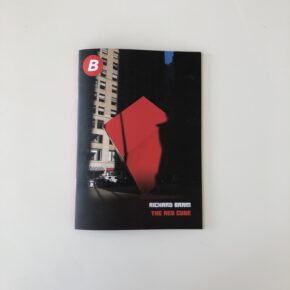

1 Comment
Great interview! Appreciated the discussion about art not making linear arguments. But clear arguments, yes, as demonstrated well by TP. Funny, I’ve spent a career making linear arguments for the utmost clarity, and now I’m making non-linear arguments trying to accomplish the same thing. Full circle, Yoda?
Comments are closed for this article!